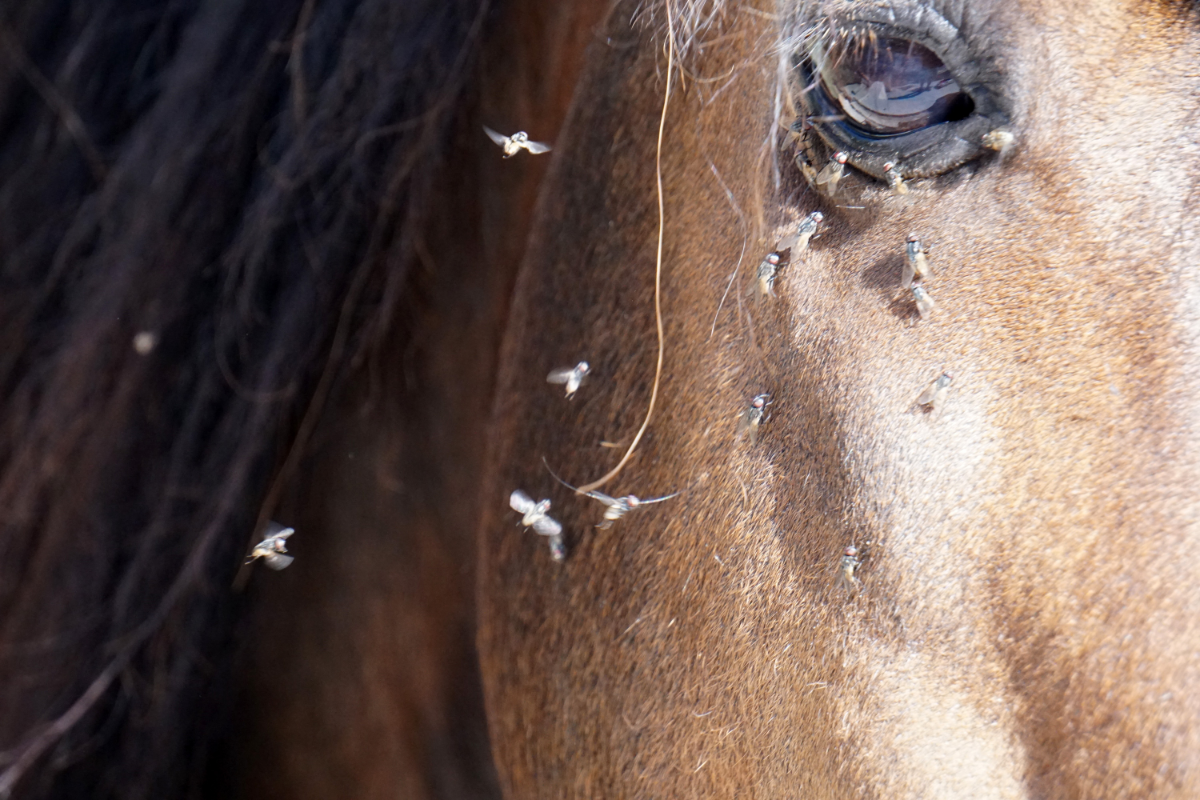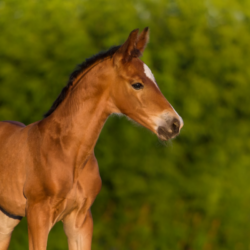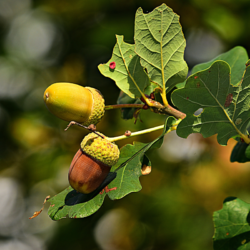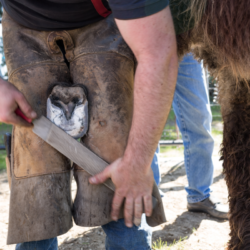Recurrent equine summer dermatitis (RESD ) is a chronic, itchy skin condition that affects many horses, ponies and donkeys. Characterised by intense itching and skin lesions, this seasonal condition can become a real nightmare for equine owners. In this article, we explore the causes, symptoms, diagnostic methods, available treatments and preventive measures to combat this disease effectively.
What causes EERD?
Recurrent equine summer dermatitis (RES D) is caused by hypersensitivity to allergens present in the saliva of small haematophagous midges of the Culicoides genus. These insects mainly bite horses, causing an intense allergic reaction in certain genetically predisposed individuals. Female Culicoides, which feed on blood, are the main culprits. In France, the prevalence of this disease is around 10%. It can be as high as 50% in Icelandic horses imported as adults.
Culicoides thrive in damp, temperate environments, with peak activity between March and November. Their presence is favoured by specific climatic conditions: temperatures between 15 and 35°C, low rainfall and little wind. These insects lay their eggs in damp areas such as ponds, riverbanks, ponds, marshes and even tree hollows.
EERD is therefore an allergic dermatosis linked to environmental and genetic factors. Susceptible horses develop allergic reactions as soon as they are bitten. This causes itching and recurring skin lesions, mainly in spring and summer. The disease is not contagious, but may have a hereditary component.
What are the symptoms of recurrent summer dermatitis?
The symptoms of recurrent summer dermatitis in equids are mainly cutaneous and manifest as intense, persistent itching. Initially, small papules may appear in the stung areas. However, these spots are often difficult to see and disappear rapidly as soon as the horse starts scratching. Intense pruritus causes the horse to rub against immovable objects, resulting in hair breakage, crusting and partial alopecia.
Lesions are generally located on the dorsal line (base of tail, croup, neck, withers) and, more rarely, on the ventral line (along the white line). Over time, the lesions become chronic, the skin thickens and wrinkles, and the hair no longer grows back. In severe cases, horses may lose weight due to incessant itching that disrupts their feed intake, and their handling may become delicate due to increased nervousness.
Affected horses often present seasonal clinical signs that regress in autumn and disappear in winter. However, over the years, these lesions can become permanent, with no winter remission period. The horses most affected are those constantly living outdoors without shelter and those exposed to damp environments that favour the presence of Culicoides.
How is the disease diagnosed?
The diagnosis of recurrent summer dermatitis is based mainly on observation of the clinical signs and their location, as well as the seasonal nature of the disease. The vet examines the condition of the skin and lesions, relying on information provided by the owner about the animal’s history and environment.
If there is any doubt, further tests may be carried out. A skin biopsy can show whether the lesions are allergic. Vets can carry out skin intra-dermal tests, which involve injecting a small quantity of allergen into the horse’s dermis, although their specificity is limited.
Blood tests can be used to determine the specific allergens to which the horse is sensitive, including Culicoides. It is also important to distinguish EERD from other dermatological conditions such as trombidiosis, fungal diseases, mange or pediculosis, using epidemiological examinations and specific skin tests.
What treatments are available?
There is currently no specific curative treatment for recurrent summer dermatitis. Therapeutic approaches are mainly aimed at relieving symptoms and improving the animal’s comfort. Steroid anti-inflammatories (corticosteroids) are used in severe cases to temporarily relieve pruritus. However, prolonged use can lead to undesirable side effects, such as immunosuppression and the risk of laminitis.
Antihistamines can also be prescribed to reduce the allergic reaction, although their effectiveness varies from horse to horse. Numerous soothing, repellent and healing lotions are available on the market. Although their effectiveness has not always been proven, they can be used in conjunction with other preventive measures.
Preventing bites is essential. At the end of the day, the horse can be brought into a disinsected stall, a mosquito net can be used, and long-acting insecticides can be applied. Antiseptic shampoos can be applied to infected lesions, and dietary supplements rich in omega 3 and 6 can help improve skin health.
What can be done to prevent it?
Prevention remains the best option for combating recurrent summer dermatitis. It’s crucial to put preventive measures in place as early as the beginning of spring, when temperatures rise above 10°C. To avoid Culicoides bites, several actions can be combined.
Horses should be brought into enclosed buildings before the end of the day and taken out after sunrise. The use of insecticide-impregnated mosquito nets at the entrance to buildings can help limit the entry of insects. Avoid meadows with wet areas or manure pits nearby, and clean water troughs regularly.
The use of full mosquito netting, covering the horse from head to tail, is also effective. Insecticides and repellents, such as those based on pyrethroids, should be applied regularly to maintain continuous protection. Supplementation with essential fatty acids and the application of repellent essential oils can also reduce the severity of symptoms.
Finally, hygiene and environmental management measures, such as disinsectisation of buildings and limiting access to wetlands, are essential to minimise exposure to Culicoides. By combining these measures, it is possible to significantly reduce the impact of ESRD on susceptible equidae.
EERD and phyto-aromatherapy
Certain plants can be useful in the treatment and prevention of EERD. Among these, burdock and Tea Tree EO are known for their anti-allergic properties. In addition, certain healing and antipruritic plants also offer benefits. Here are a few examples:
- Plantain: Plantain leaves contain phenolic compounds, polysaccharides and iridoids. These give the plant immunomodulating, anti-allergic, anti-inflammatory and anti-infectious properties. Plantain inhibits mast cell degranulation, reduces allergic reactions and stimulates wound healing.
- Fumitory: The aerial parts of fumitory are rich in alkaloids, flavonols and tannins. This plant has hepatoprotective, anti-inflammatory and anti-allergic effects, thanks in particular to protopine. Fumitory is also a powerful antioxidant, making it a good choice for eczema lesions and allergic dermatitis.
- Desmodium: Desmodium stems, leaves and flowers contain saponosides, flavonoids and anthocyanins, offering anti-asthma and anti-allergy properties. Desmodium inhibits allergic reactions by acting on histamine and leukotriene synthesis, making it an effective plant for allergic dermatitis.
- Nettle: Nettle leaves are rich in mineral salts, flavonoids and phenolic acids.Nettle has anti-inflammatory, antihistaminic and adaptogenic effects, which are useful for treating urticaria and inflammatory dermatitis. It also boosts the immune system.
- German chamomile: Chamomile flowers and their EO contain anti-inflammatory, antipruritic and anti-allergic compounds. Chamomile is effective in reducing skin inflammation and preventing infections thanks to its antibacterial and healing properties.





